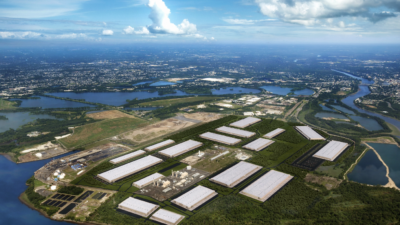The U.S. industrial real estate sector has enjoyed a generous season of growth as pandemic-fueled e-commerce activity resulted in increased demand for warehouse and distribution facilities. This demand helped maintain robust occupancy gains, development activity, historically low vacancy rates, and record-high asking rents. A number of potential challenges facing the sector, however, threaten to disrupt the remarkable success of the last two years, with some suggesting we have reached the peak of industrial activity. What impact could the following issues have on industrial fundamentals?
West Coast Port Negotiations
Port activity on the West Coast has been widely publicized since the start of the pandemic. From record levels of TEU volume to COVID-19 restrictions, long delays, and congested terminals, seaport operations have been a trending topic within the commercial real estate space. To compound matters, negotiations between the International Longshore Warehouse Union (ILWU), which employs more than 22,000 employees, and the Pacific Maritime Association (PMA), which has 29 ports stretching between California and Washington State, handles approximately 60% of all Asian imports continues. Previous negotiations in 2015 halted work at the ports for eight days, causing a significant delay in trade flow – an outcome that all sides are trying to avoid.
A vital issue in the current negotiations is the automation of containers at the ports, which would result in fewer jobs – a concern for West Coast ILWU members. Other contract points include pay, benefits, and work hours, to name a few. Any service delays due to contract issues would be catastrophic to U.S. businesses while consumers are still recovering from the global pandemic and the conclusion of fiscal government support.
While the negotiations continue, shippers have begun to reroute container ships to East Coast ports when possible. This move, however, has caused interruptions at some of the nation’s larger ports, like the Port of New York/New Jersey, as well as increased transportation costs. Efficient U.S. seaport operations are critical to mitigating future supply chain delays and ensuring timely delivery of products to U.S. consumers.
Occupiers have been keeping a close eye on these negotiations as any delays can potentially cause significant jams at seaports, higher costs, and longer lead times – all leading into the holiday season. In addition, while awaiting the terms of a new labor deal, expect some occupier demand to shift to East Coast ports to ensure on-time delivery and availability of warehouse space.
Rising Interest Rates/Capital Markets
The industrial investment market has remained profitable; however, the surge in interest rates, plunge in the stock market, and weakness of consumer confidence have fueled fears of an impending recession and, in turn, a decreased demand for industrial properties in the investment market. The Federal Reserve began to increase interest rates for the first time since 2018 and plans a handful of additional rate increases this year as it tries to combat inflation with a burst of quick rate increases. In the most recent raise in June, the Fed lifted interest rates by three-quarters of a percentage point – the most aggressive rate hike since 1994 and is likely to do so again at its July meeting.
Real estate has historically been seen as an inflation hedge. With rising rents, particularly in industrial, the outlook for net operating income growth remains strong, which should drive more capital to real estate. While investment sales volume has slowed over the last two months; however, the price per square foot continues to climb, reaching a new record of $145 per square foot in May. Despite some challenges, strong fundamentals continue to pull in a record pace of investment capital.
Geopolitical Conflicts
Investors and occupiers alike remain concerned with current geopolitical conflicts. The Russia/Ukraine war that began early in 2022 has exacerbated the gas shortage and, in some ways, has contributed to the rise in fuel costs in the U.S. Russia is one of the world’s largest oil suppliers, and global fuel shortages have commenced as a result.
Furthermore, the supply chain continues to feel the pressure of the COVID-19 pandemic. The U.S. supply chain was disrupted in March of 2020 and has yet to fully recover from the initial shock of the global health crisis.
Overall, the results of these concerns will undoubtedly have a lasting impact on the industrial real estate market. If the economy falls into a recession, expect restrained occupier demand. However, as it stands, the market is set to add a significant amount of new development to meet occupiers’ requirements which should add to the limited amount of available inventory on the market. While these issues may pose some challenges to the industrial sector, we have witnessed, time and time again, that additional opportunities will arise, regardless of the outcomes. The industrial market will remain poised to take advantage of these circumstances and continue to remain profitable in the ensuing years.

 U.S. National Research
U.S. National Research

 Michael Golarz
Michael Golarz Tom Golarz
Tom Golarz
 Craig Hurvitz
Craig Hurvitz
 Lauren Pace
Lauren Pace Ronna Larsen
Ronna Larsen